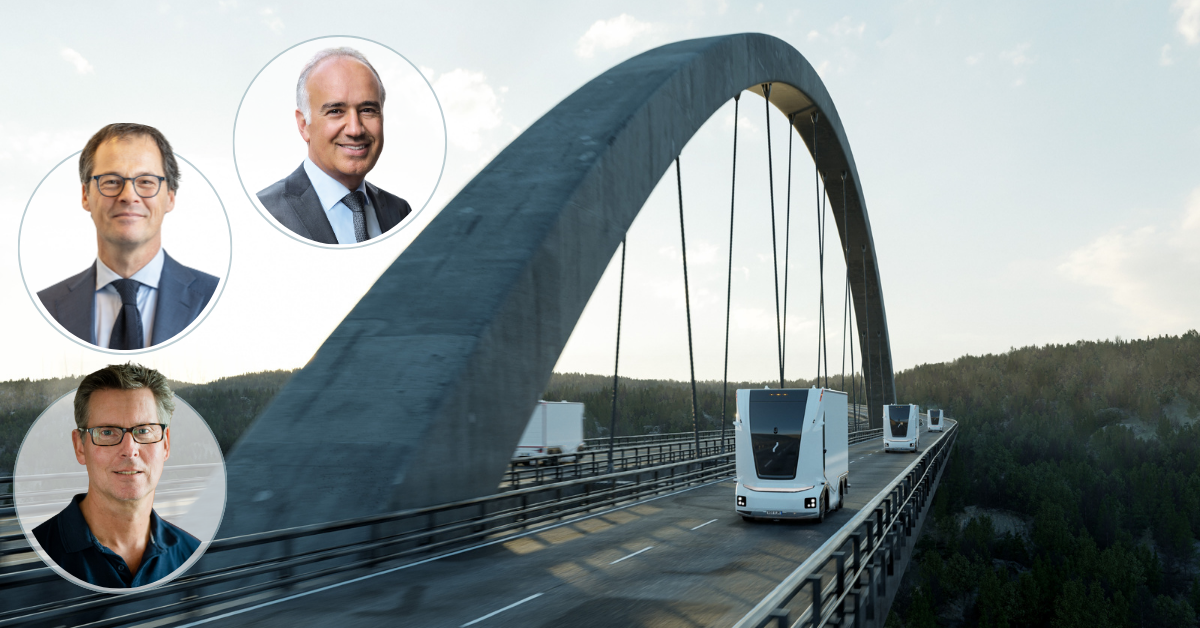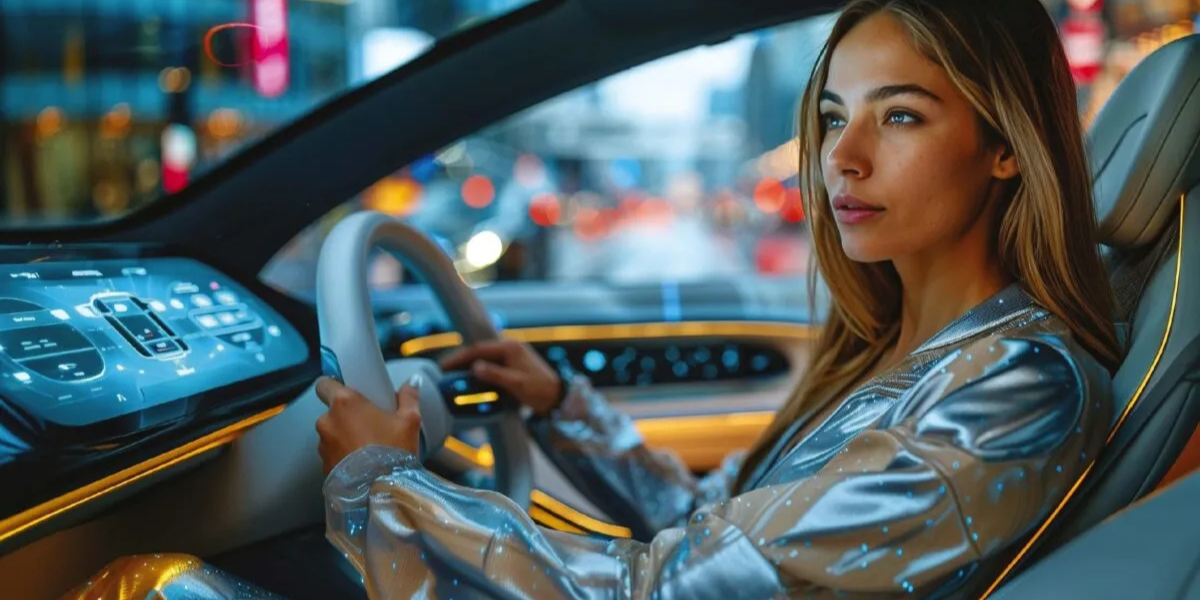ON AIR 6 | Cooperative Connected and Automated Mobility (CCAM)
The pandemic engendered unforeseen challenges for and adjustments within the field of Cooperative Connected and Automated Mobility (CCAM) research. However, smart mobility as a whole has undergone some significant changes with the introduction and widespread use of connected vehicle and traffic technology.
The many interventions on the physical and digital road network have paved the way for a gradual move from human driving to self-driving, allowing vehicles, roadways, travellers, and traffic management centres to communicate with one another in real time.
The role of the recently founded CCAM association is to speed up further European CCAM developments and aims to create a user-centric, inclusive mobility system, increasing road safety while at the same time reducing congestion and the vehicle emissions footprint. During episode 6 of our Intertraffic ON AIR series, three CCAM experts Tom Alkim (European Commission), George de Boer (TomTom Automotive) and Peter Morsink (Royal Haskoning DHV) shared their ideas on reaping the CCAM benefits and deploying smart technology to connect infrastructure, vehicles and road users.
The Benefits of Cooperative Connected Automated Mobility (CCAM)
Tom Alkim from the European Commission’s DG Research & Innovation, discussed the Commission’s Sustainable and Smart Mobility Strategy, that will see all transport modes become more sustainable, with green alternatives widely available and the right incentives put in place to drive the transition. One of six major milestones in that strategy is the widescale deployment of ‘automated mobility’.
The document highlights that “connected and automated systems have enormous potential to fundamentally improve the functionality of the whole transport system,” says Alkim, “and contribute to our sustainability and safety goals.”
“CCAM will bring down the number of road fatalities and accidents, help to reduce harmful emissions from transport by smoothing traffic flow and avoided unnecessary trips, and make transport more accessible to ensure universally inclusive mobility.”
“Connected and automated systems have enormous potential to fundamentally improve the functionality of the whole transport system”
However, Alkim warns that this can only happen if development is supported and that there is significant market uptake of connected and automated mobility and logistics systems.
Among a whole host of salient points, one telling sentence from Alkim echoed the view of other experts from across the globe – that for CAVs to become a commonplace sight on our highways and byways, “connected and autonomous vehicles will have to be integrated into the broader transport systems and interact with other forms of mobility.”
Towards Fully Connected Driving
George de Boer of TomTom Automotive highlighted his company’s drive towards a cloud-based world and another in a long line of new automotive products off the production line – this time, a Hazard Warnings system that forms part of TomTom’s connected navigation portfolio.
“Today connected navigation is commonplace in the western world. We have brought connected navigation into the dashboard, and this is even more important for electric vehicles. You need to know the charging status of your car, you need information on where free charging points are on the motorway. This is the role of connectivity in navigation,” he explained. “Connectivity is being used to update TomTom maps or get the latest information so drivers can update their routes with information that might have changes, such as speed limits or weather conditions.”
“It’s not just sending information to the car but also getting information from connected vehicles via 600 million data points. For example, broken down vehicle information is updated into the cloud within 5 seconds to make it safer for everyone.”
TomTom Automotive has moved all of its services to the cloud, ensuring a highly responsive navigation experience. Drivers can count on up-to-date maps and services, including fast and extensive search.
“Seeing what’s coming also makes it possible to merge at just the right time, improving fuel efficiency”
“Most importantly, our embedded navigation seamlessly integrates with vehicle sensors and remains highly reliable – independent from connectivity status. TomTom’s automated driving technology helps vehicles anticipate the road ahead, making driving smoother and more efficient. When cars understand the curvature and gradient, they're able to plan the most efficient route. Seeing what’s coming also makes it possible to merge at just the right time, improving fuel efficiency.”
Deployment of Cooperative Connected and Automated Mobility
The theme of Royal Haskoning DHV’s senior expert in traffic safety, Peter Morsink’s presentation was co-operation, collaboration and integration.
“Our three-pronged integrated safe systems approach will ensure the sustainable development of smart vehicles in current and future traffic systems,” he said, highlighting his organisation’s focus on infrastructure, the human element and the vehicle itself. Connecting multiple stakeholders to ensure safe and effective use of smart vehicles and collaborating to further accelerate the impact and introduction of smart vehicles are also crucial to the future deployment of CCAM.
Of persistent interest to the transport press and motorists alike is how our transport network will cope with the eventual mix of driverless vehicles with human-driven machines. A question from the audience that was put to Morsink by moderator Marinda Hall.
“Drivers need to be aware that if they are in an automated car that it may behave differently from other cars on the road”
“We’re in a very interesting period now. Mixed traffic is happening now, but by gradually introducing these smart functions into our vehicles, raising awareness, making it part of testing and training, it’s possible to tackle that issue and make it less of a leap,” he says. “Drivers need to be aware that if they are in an automated car that it may behave differently from other cars on the road. I think we need to pay attention to that. My car has automatic cruise control and might close the gap to the car in front a lot more slowly than human driver might, for example. Another car might try to cut in front of me if the driver sees the gap. We need to be aware of these types of situations.”
Watch the full episode of Intertraffic ON AIR >
Share your story
Do you have an innovation, research results or an other interesting topic you would like to share with the professionals in the infrastructure, traffic management, safety, smart mobility and parking industry? The Intertraffic website and social media channels are a great platform to showcase your stories!
Please contact our Sr Brand Marketing Manager Carola Jansen-Young.
Are you an Intertraffic exhibitor?
Make sure you add your latest press releases to your Company Profile in the Exhibitor Portal for free exposure.
Get up to speed on the mobility industry - our newsletter straight to your inbox!


.png?h=600&iar=0&w=1200)
